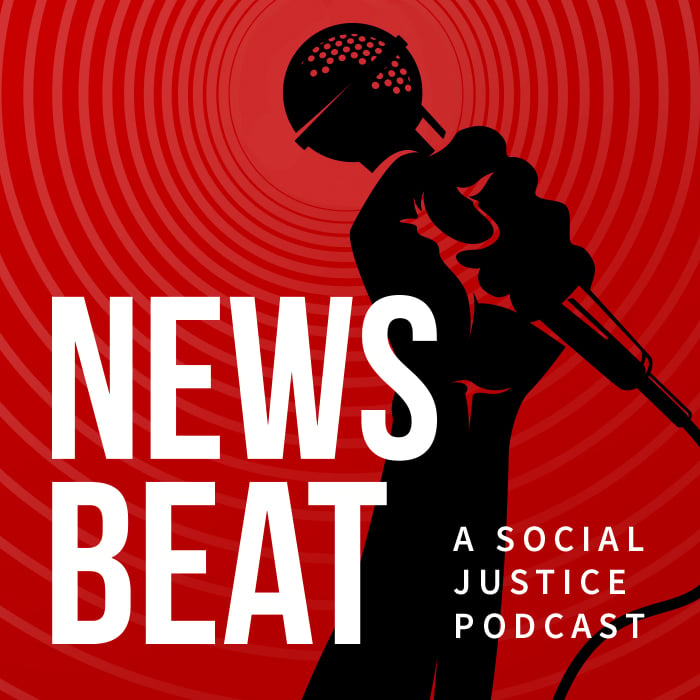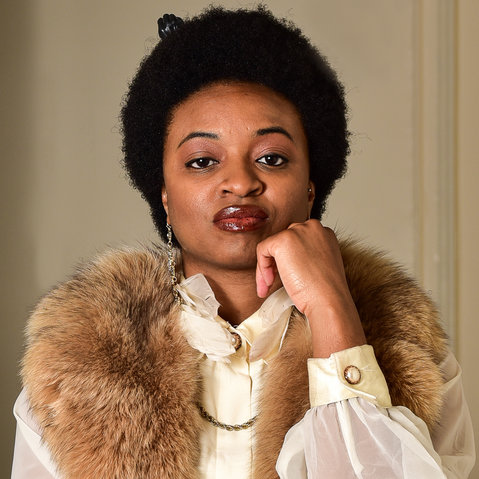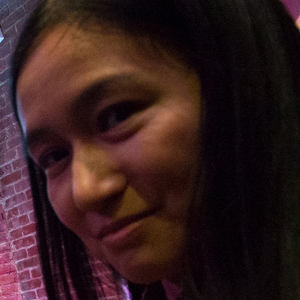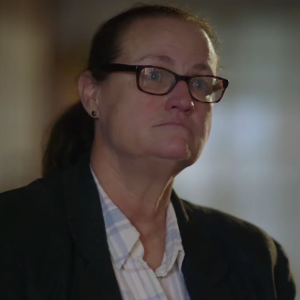“Where am I going?” Morse, the then-mother of a 22-month-old baby girl, asked her chaperone, a guard at Manhattan’s notorious Rikers Island jail.
“You’re going to the Hilton of housing units,” he replied, referring to the posh hotel chain. Morse had just completed processing, and she was getting her first taste of life inside one of America’s largest correctional facilities.
“The girls there will take care of you,” the guard continued.
Confused, admittedly naive, and justifiably anxious, Morse assumed his comforting words genuine.
The girls there will take care of you.
“I thought, you know, the girls were really nice,” Morse recalls.
The dormitory was furnished with rows upon rows of gurney-sized beds. Morse counted 63 in all.
The nearby shower was a tiled room devoid of partitions for privacy. It was there that she was jumped by four inmates and sodomized.
Unbeknownst to Morse, who suffers from Post Traumatic Stress Disorder (PTSD), the guard had falsely accused her of being a snitch to other inmates, effectively making her persona non grata. While the guard’s motivation may be unclear, the consequences of his action were tragically predictable.
The girls there will take care of you.
Afraid of becoming the very thing the guard accused her of being, Morse kept quiet and would crouch in bed, bleeding. She tried to stem the blood flow with sanitary pads, which were in abundance.
“I would lay in bed hoping to die,” Morse says, from the safe confines of her home in New Jersey.
Since completing a sentence for stealing money from her employer, Morse has become a fierce advocate for women prisoners and an unrelenting critic of Rikers. But this isn’t a story about one incident inside one, particularly dangerous jail. There are thousands like Morse—women, men, and transgender folk—who’ve experienced horrific sexual assaults while incarcerated, and whose complaints either fell on deaf ears or were voluntarily smothered by a personal vow of silence taken for fear of repercussion.
“The abuse and the harassment that people face is not any more okay inside a detention facility than it is on a movie set or in a hotel room or on any kind of worksite.
– Linda McFarlane, Just Detention International
In July, the Bureau of Justice Statistics, an arm of the Department of Justice, announced that the number of reported sexual attacks in prisons, jails, and other correctional facilities tripled in 2015 compared to 2011. The spike coincided with the implementation of new standards in 2012 called the National Standards to Prevent, Detect, and Respond to Prison Rape, a mandate of the Prison Rape Elimination Act of 2003. While the BJS recorded more than 24,000 such incidents in 2015, only 1,473—less than 1 percent of all recorded complaints—were substantiated. Still, that represented a 63-percent increase from 2011, when less than 1,000 were proven to be based in truth.
Numbers help tell the story of widespread sexual abuse inside jails and prisons within the United States, but these figures don’t speak to the mental and physical toll of being an incarcerated sexual abuse survivor. For many victims, there’s no one to turn to for help. Perhaps most terrifying, there’s nowhere to hide, either. Like victims of domestic abuse, inmates live among their tormentors, and in the case of abuse by staff, they’re forced to be differential, so long as not to incur administrative penalties. Among BJS’ findings: 42 percent of the “substantiated” sexual attacks were carried about by correctional staff.
“Sexual abuse and sexual harassment inside U.S. prisons and jails is a nationwide human rights and public health crisis,” Linda McFarlane, an executive director at nonprofit Just Detention International, which seeks to end sexual abuse inside correctional facilities, tells News Beat podcast.
Sexual abuse, in general, is severely underreported, according to various studies. Eighty percent of such crimes isn’t reported to law enforcement. Among the reasons: fear of retaliation, doing so would put the attacker in legal jeopardy, and the belief that police would be unhelpful.
The stakes are even higher for incarcerated survivors, where retaliation presents a clear and present danger. As a result, sexual abuse inside government institutions may be more widespread than official figures suggest.
“The best federal research we have indicates that over 200,000 people per year are abused inside our government institutions,” McFarlane says, rattling off various facilities in which abuse occurs: prisons, jails, juvenile facilities, and immigration centers. The scourge of sexual violence is so rampant it pervades every level of government-run correctional institutions, big and small, she says.
Sexual violence has also taken on more significance lately, as women are increasingly speaking out about their own experiences.
The #MeToo movement has ushered in a new era in which survivors are more comfortable to come forward and speak out. It has united women across all walks of life around a tragically common occurrence. Some of the biggest names in media—Matt Lauer, Charlie Rose, Les Moonves—were felled by sexual assault allegations. Harvey Weinstein, the powerful film producer, was charged this past spring with raping a woman and allegedly forcing another to perform oral sex. In April, Bill Cosby was convicted and later sentenced to up to a decade in prison for sexual assault.
Accusations have been levied against President Trump, who is accused by more than a dozen women of improper sexual advances. Justice Brett Kavanaugh was accused by Christine Blasey Ford of attempted sexual assault, but nevertheless was confirmed to America’s highest court.
The screams of #MeToo have also breached the walls of America’s jails and prisons, echoing from facility to facility. This rare life preserver from the outside has jolted the women on the inside, empowering them to want to speak up, advocates say.
“The abuse and the harassment that people face is not any more okay inside a detention facility than it is on a movie set or in a hotel room or on any kind of worksite,” McFarlane says. “We hear from survivors all the time and actually some women prisoners that we work closely with have recently been talking to us about how they can we be part of this movement. And that’s something that we’re working on right now.”
Trapped
The extent to which America has become the world’s largest prison state is well documented. And while men comprise the majority of people incarcerated, women are the fastest-growing correctional population in the country, according to the nonprofit Vera Institute of Justice. Between 1970 and 2014 the number of women in jail skyrocketed from 8,000 to 110,000. Including federal and state prisons, female incarceration is estimated at 219,000, according to the Prison Policy Institute. Of the total population of women prisoners, 60 percent are mothers, further imperiling already splintered families, which has a long-lasting impact on children, some of whom end up in foster care.
“Once a rarity, women are now held in jails in nearly every county—a stark contrast to 1970, when almost three-quarters of counties held not a single woman in jail,” Vera Institute wrote in a report titled “Overlooked.”
The explosive growth of female incarceration is inexorably linked to the long-running “War on Drugs” and the slashing of welfare, says Victoria Law, an independent journalist, and author who has written extensively about women in prison.
It was common practice for law enforcement to sweep up not only street dealers but their associates who passed along messages, as well as girlfriends and wives of drug pushers, often on either drug, or, Law adds, conspiracy charges.
“Which means that you didn’t actually have to have dealt drugs yourself or sold drugs or conducted any sort of transaction,” Law adds. “But because you were associated with somebody else, you can be charged with conspiracy.”
Simultaneously, Clinton-era welfare reform gutted the social safety net “keeping family members and marginalized people afloat,” says Law.
For the majority of women locked away, an estimated two-thirds, the tragic reality is that sexual violence predates their incarceration.
Nearly a decade ago, the American Bar Association released a report highlighting the underlying issues that face many women in prison as a result of past sexual abuse, writing: “Not surprisingly, such histories of abuse translate into severe mental health problems for incarcerated women.”
Not much has changed in the years since. Vera Institute’s “Overlooked” project, which culminated in a 48-page report published in 2016, came to a similar conclusion.
“Women often become involved with the justice system as a result of efforts to cope with life challenges such as poverty, unemployment, and significant physical or behavioral health struggles, including those related to past histories of trauma, mental illness, or substance use,” the report states. “More than half of women in jails report having a current medical problem—compared to 35 percent of men.”
Take the story of Jacqueline Smalls, a domestic abuse survivor and 55-year-old grandmother from New York, who killed her boyfriend in self-defense. She was charged with murder but eventually pleaded guilty to manslaughter.
What maddens advocates about Smalls’ case is how the system failed her—repeatedly. As a result of the physical abuse, she got two orders of protection against him, according to Law, including one that inexplicably permitted contact but came with a caveat: The boyfriend couldn’t abuse her. He violated a second order and “stormed” into her house late one night in 2012, and subsequently began assaulting her. Smalls grabbed a knife and fatally stabbed him.
“She went to court and despite his history of abuse and violence, despite the fact that the courts knew about this because they had issued two orders of protection against him, prosecutors were not dropping the charges,” Law says. “And she finally felt that she had no other recourse than to plead guilty to a lesser charge of manslaughter.”
Smalls is seeking clemency from New York Gov. Andrew Cuomo.
Dialing #MeToo
Beyond Hollywood and corporate media giants, #MeToo has galvanized women across all industries and society. But just as the media and public were slow to recognize how endemic rape is inside correctional facilities, the still-growing movement has yet to embrace the plight of incarcerated survivors. Advocates of incarcerated women hope the movement doesn’t leave them behind.
Whatever economic or societal differences separate women of industry and those behind bars, the impact of sexual abuse on women, in general, is horrifyingly similar.
McFarlane of Just Detention International points to common experiences that binds all survivors: fear, anger, sadness, nightmares, and terrifying flashbacks that appear at random.
“In the person’s brain and body they actually feel like the abuse is happening again,” explains McFarlane.
“Most folks nowadays have heard of Post Traumatic Stress Disorder, and the debilitating effect that it can have on people’s lives,” she adds. “But incarcerated survivors experience all of that, plus they’re trapped in the place where the abuse happened, and very often with the friends, associates or co-workers of the perpetrators, or the perpetrators themselves. The sort-of isolation and the feeling of being alone that incarcerated survivors experience is extremely intense.”
When Morse bravely recalled her attack during our interview, she did so in vivid detail. It is a horror forever seared into her memory.
Morse’s incarceration has taken a toll on her mentally and physically. In addition to suffering from PTSD, she also weathers flashbacks, nightmares, and heart palpitations. She avoids crowds. Worst yet, there are no support groups in her community for the formerly incarcerated. Traditional mental health experts can’t offer much help, because they don’t know what it’s like to be imprisoned.
The feeling of isolation is compounded by difficulties obtaining employment, while also complying with parole’s many mandates. For those released without identification, it’s a struggle to receive social services. Taken together, it’s a toxic recipe that breeds despair.
Morse, however, trudges on. She’s become an advocate for women in prison and educates people about sexual abuse and violence behind bars.
Morse, who spent 11 months in Rikers before she was transferred to an upstate facility, is outspoken about the need to close Rikers and its all-female jail, the Rose M. Singer Center, which opened in 1988 and has since expanded to hold 1,700 inmates.
Earlier this year, the New York City Council held a hearing on sexual abuse inside detention facilities. A report prepared prior to the hearing noted that 198 allegations were made by inmates at Rose M. Singer Center in 2017, and only six investigations were completed at year’s end. The nearly 200 allegations at the Rikers-based facility were the most of any correctional facility in the city, according to the committee’s report, which criticized the Department of Corrections of “denying victims due process.”
That investigations were incomplete was not at all surprising, given the results of a startling report leaked to the media in 2015 that found improper handling of investigations by DOC and insufficient investigatory work, according to the committee’s report.
It was only in 2017 that DOC implemented PREA standards, according to a DOC report that documented a nearly 40-percent increase in sexual abuse and sexual harassment allegations between 2016 and 2017. The number of complaints made against staff increased 86 percent over that period.
“If you look at any of the plans for closing down Rikers and the establishment of the smaller community facilities, the culture of sexual abuse on Rikers is never addressed,” says Morse. “And that’s part of the whole Close Rosies campaign, is…we are determined to make sure that the community is aware of what’s going on out there.”
Morse does her part, and she hopes the #MeToo campaign encourages other women to also speak out.
“I’m hoping by sharing my own story,” she says, “that I will empower others to come forward with theirs.”
“In an era where survivors of sexual assault voices are being elevated more than they ever have before with the #MeToo movement, with Time’s Up,” adds McFarlane, “it feels like there’s a new platform, there’s new conversations happening around sexual abuse…I do think that now is a time to sort of crack these doors open and make sure that incarcerated survivors get their voice heard in the same way.”










